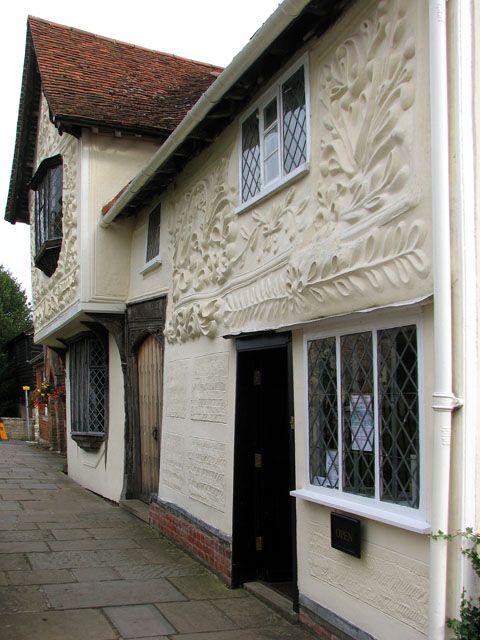#16678. Traditional English Facade with Decorative Stucco: Historical Charm in Details

This historic building represents a magnificent example of traditional English architecture with its characteristic plastered facade adorned with exquisite relief decoration. Particularly impressive is the rich stucco on the second floor depicting floral motifs, which creates a unique artistic accent on the snow-white surface of the wall.
The facade demonstrates an approach classic to English medieval houses: a combination of light plaster with wooden elements and diamond-paned windows. The lower part of the building is executed in the "pargeting" technique – decorative plaster work traditional for Eastern England. Such facade design creates a unique appearance, combining the simplicity of the main surface with rich decorative elements.
The architectural composition includes asymmetrically placed windows, a dark wooden entrance door, and a projecting element on the left side of the building, which is characteristic of medieval English construction. The roof is made of traditional terracotta tiles with a characteristic shade and texture, which complements the historical authenticity of the structure.
When designing a modern house, one can borrow techniques such as the use of decorative plaster with relief elements, the contrasting combination of light walls and dark wooden details, the asymmetric arrangement of window openings, and traditional tiled roofing. These elements will allow the creation of a house with character and historical reference, even in a modern context.